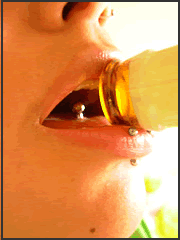
© iStock

© iStock

Image: iStockphoto
In the Belgian study, conducted at a youth mental health unit at the University of Antwerp, mothers who had a child receiving psychiatric care (for conditions including depression and anxiety) completed an eight-week Group Triple P program, in addition to their own regular therapeutic support and the child’s usual treatment. [continue reading…]
Use of most electronic media is not associated with headaches, at least not in adolescents. A study of 1025 13-17 year olds, published in the open access journal BMC Neurology, found no association between the use of computer games, mobile phones or television and the occurrence of headaches or migraines. However, listening to one or two hours of music every day was associated with a pounding head. [continue reading…]

© iStockphoto
Exposure to ecstasy or cocaine during adolescence increases the “reinforcing effects” that make people vulnerable to developing an addiction. This is the main conclusion of a research team from the University of Valencia (UV), which has shown for the first time how these changes persist into adulthood.
“Although MDMA and cocaine are psychoactive substances frequently used by teenagers, very few studies have been done to analyse the short and long-term consequences of joint exposure to these drugs”, José Miñarro, lead author of the study and coordinator of the Psychobiology of Drug Addiction group at the UV, tells SINC [continue reading…]